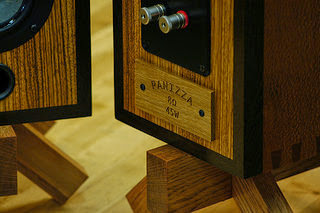I purchased a book at the Weisman Art Museum some time ago titled Work, Life, Tools. by Milton Glasser. The book takes a look at the essential tools that a number of individuals use to accomplish daily tasks, and why they consider one special tool to be more important than any other in their daily lives and work.
Some of the tools that people identify with as most important to them are simple objects, and yet for some reason, that simple tool resonates with them in the way they use it to accomplish a particular task. The book caught my attention because there are things I build that stand out among the rest, and resonate beyond the simple tasks they were designed to accomplish. After some time, those projects are beginning to speak a common language, a philosophy that focuses on a list of well defined and essential aspects required of an object no matter what that object is used for, and then creatively interpreted through a specific design. Let me describe three very different projects in some detail that demonstrate this.
 A BASIC KITCHEN CABINET
A BASIC KITCHEN CABINETI built this cabinet during my early experience in woodworking to house kitchen plates and utensils during a time when I lived in a small studio apartment. The cabinet not only provides storage for kitchen items, but has casters so it can be positioned where needed while using the black Formica top as additional work space. The cabinet is sectioned into a space for larger plates and coffee cups. Utensils have their own drawer, and a separate space in front houses glassware and bowls. The unique design of the cabinet with its multiple compartments still makes it a favorite among friends. The cabinet has been in many places with me since I built it.
Pipe organ building is still where I consider my best work is found. I built a total of three one-manual mechanical action pipe organs as an independent builder. One of them is pictured here. They each have no more than five voices, yet all provide exceptional function beyond any perceived limitation because those voices are vertically integrated in such a way that renders a surprising number of individual tonal possibilities. The organs of baroque southern Germany and France provide me with the conceptual basis for tonal design upon which tonal diversity is further generated in such small instruments. An organ built in this way does not have to dominate a musical setting, but rather contribute where most effective either alone or in combination with other instruments or voices.
A REAR DERAILLEUR EQUIPPED TRACK FRAME BUILT BICYCLE
When I bicycle ride in the city, I find that I almost never shift between the available front gears. So when I decided to build my own bike, I began with a light and agile single speed track frame, and added the necessary components to make it an urban commuter with a nine speed, rear derailleur only drivetrain. Using a mountain bike cassette rather than one intended for a road bike, I produced enough variability in gear ratio for almost any pedaling situation encountered with only one chainring and no derailleur up front. I built what a professional bike builder called my urban machine. The visceral experience of performance and simplicity are most important. Getting from one place to another is secondary.
 SUMMARY
SUMMARYMy design philosophy begins with some need expressed in the form of requirements that define an object in terms of its essential elements. I embrace disruptive change, and so my answer to a design problem is to often push beyond the expected. My work strives to maintain its focus on essential elements designed around an innovative solution which then produces an object that invites broader interaction between an individual using that object and the object itself. An individual who has his or her imagination further stimulated by the creative design of an object will further connect with that object as a result. That object becomes his or her favorite tool for work or life.


















